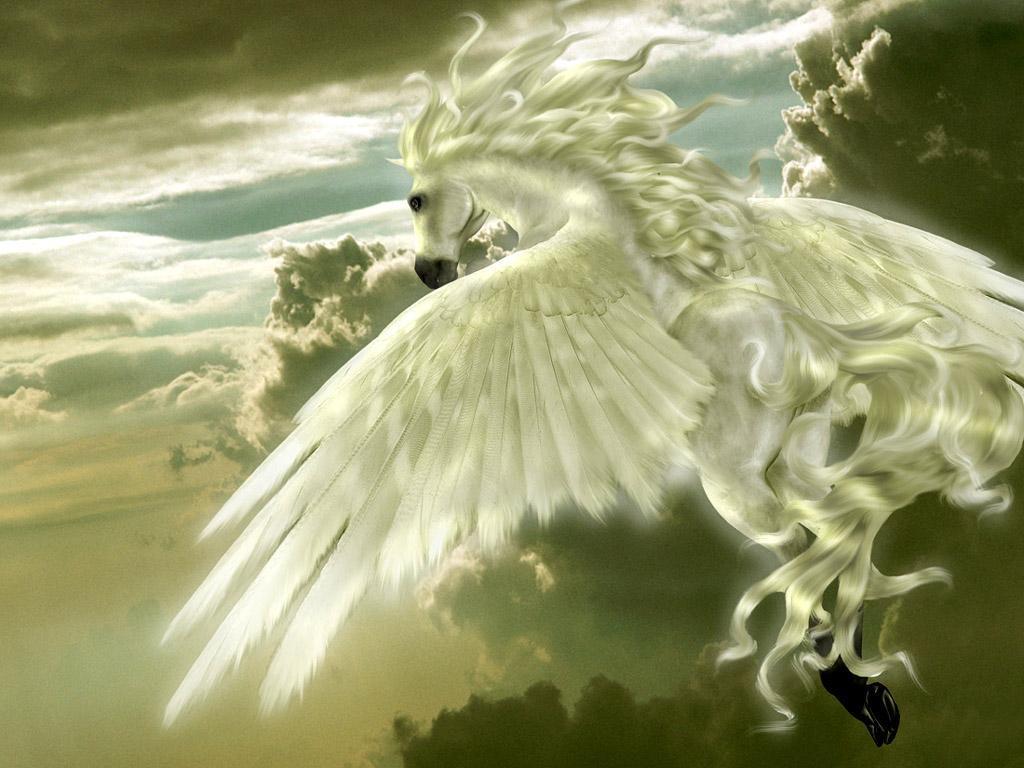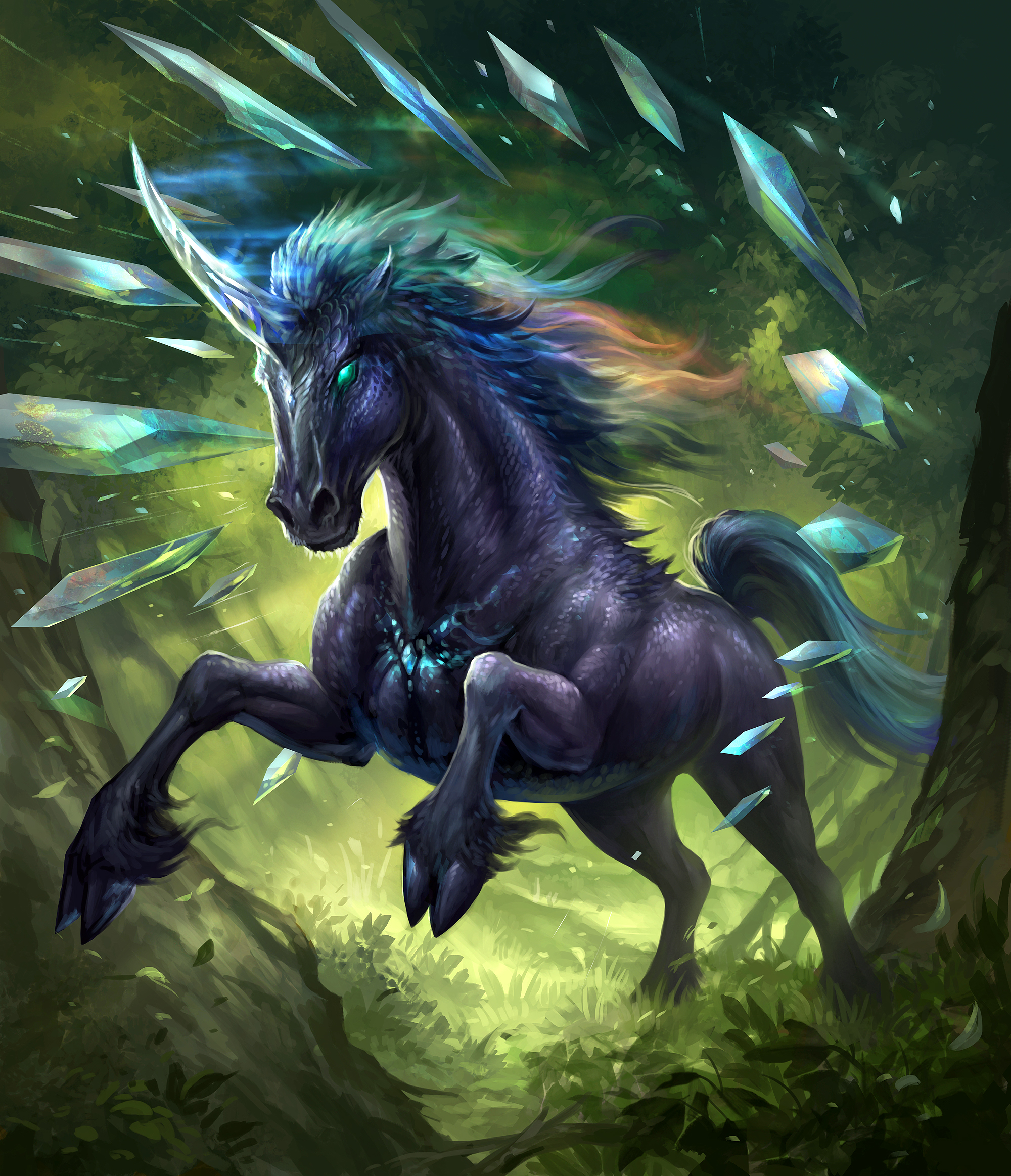Growing up, I was obsessed with mythical creatures. Unicorns, dragons, and griffins filled my imagination, but the two creatures that always sparked the most debate among my friends were unicorns and pegasi. “Which one is better?” they’d argue, and while I couldn’t choose a favorite, the question always led to fascinating discussions about their unique qualities and powers. Throughout history, these majestic beings have captured our imaginations, gracing tales and art with their ethereal presence. But what exactly sets them apart? Let’s dive into the fascinating world of unicorns and pegasi, exploring their origins, symbolism, and enduring appeal.

Image:
Understanding these creatures requires more than simply comparing their physical attributes. Their symbolic meanings are deeply intertwined with their respective cultures and myths, influencing their role in literature, art, and even modern pop culture.
The Majestic Unicorn: Symbol of Purity and Grace
Origins and Symbolism
Unicorns, with their single spiraled horn on their foreheads and powerful stature, have been a feature in mythology for centuries. Their earliest depiction can be traced back to ancient Mesopotamia, where they were associated with deities and represented strength and power. In ancient Greece, the unicorn was often linked to the god Zeus, serving as a symbol of his divine authority. However, the unicorn’s most well-known symbolism comes from medieval European folklore, where it became inextricably linked to purity, innocence, and spiritual healing.
This association with purity stemmed from the belief that a unicorn’s horn possessed magical healing properties. Legends claimed that the horn could purify water, nullify poisons, and even cure diseases. The unicorn’s elusive nature and its ability to be captured only by a virgin reinforced its association with purity and chastity. In Christian tradition, the unicorn was sometimes interpreted as a metaphor for Christ, embodying his innocence and sacrificial nature.
Modern Relevance
The unicorn, with its enduring charm, has seamlessly transitioned into modern culture. Its enduring association with purity and innocence has led to its widespread use in children’s literature and media, making it a beloved symbol of childhood and wonder. Furthermore, the unicorn’s representation of strength and power has resonated with feminist movements, redefining its symbolism as representative of feminine strength and resilience.
The unicorn’s popularity also extends to the world of fashion, with unicorn-themed clothing, accessories, and even home decor becoming increasingly common. This surge in popularity is fueled by the unicorn’s whimsical nature and its ability to spark joy and wonder, reminding us of the magic that exists in the world.

Image:
The Winged Pegasus: Symbol of Freedom and Inspiration
Origins and Symbolism
Pegasus, a winged horse born from the blood of Medusa, holds a prominent place in Greek mythology. Unlike the unicorn, whose existence is often linked to its magical horn, Pegasus is renowned for its ability to soar through the skies. It is a symbol of freedom, inspiration, and poetic creativity.
In Greek mythology, Pegasus was associated with the Muses, goddesses of the arts. It was said that the sound of its wings beating in the air inspired poets and writers to create their masterpieces. Pegasus was also the loyal steed of the hero Bellerophon, who used the horse to slay the monstrous Chimera, showcasing Pegasus’s power and agility. Its presence in Greek mythology solidified its association with ambition, courage, and the pursuit of lofty goals.
Modern Relevance
In contemporary arts and literature, Pegasus remains a powerful symbol of freedom and inspiration. It embodies the limitless potential of human creativity and the enduring desire to break free from constraints.
Pegasus’s connection to literature has solidified its place within the world of creative arts. As a literary symbol, it represents the power of imagination and the ability to transcend limitations. Its soaring flight is often interpreted as a metaphor for the creative process, the journey of self-discovery, and the power of dreams. In modern design and architecture, the image of Pegasus is often incorporated to symbolize freedom of thought and the pursuit of new heights.
Unicorn vs Pegasus: A Comparative Analysis
While both creatures share a common lineage as mythical horses, understanding their distinct symbolic meanings helps illuminate their unique characteristics. Here’s a comparative table highlighting their key differences:
| Feature | Unicorn | Pegasus |
|---|---|---|
| Origin | Ancient Mesopotamia and Greece | Greek Mythology |
| Primary Symbolism | Purity, Innocence, Healing | Freedom, Inspiration, Creativity |
| Physical Characteristics | Single spiraled horn on forehead | Wings |
| Notable Associations | Virgin Mary, Christian Symbolism | Muses (Greek goddesses), Bellerophon |
Tips for Exploring the World of Unicorns and Pegasi:
For those enthralled by the mythical world of unicorns and pegasi, here are some tips for further exploration:
- Delve into Ancient Myths and Legends: Explore the rich tapestry of stories surrounding both creatures in their respective cultures. Research their origins, their roles in different mythologies, and the symbolic meanings attributed to them.
- Seek Inspiration in Art and Literature: Explore the vast collection of paintings, sculptures, literature, and poetry featuring unicorns and pegasi. Seek out works that capture their captivating beauty and explore their diverse interpretations.
- Embrace the Modern Interpretations: Examine the reimagined versions of unicorns and pegasi in contemporary art, film, and television. Notice how these adaptations reflect modern perspectives and utilize the creatures as symbols of strength, freedom, and imagination.
Exploring the mythical world of unicorns and pegasi offers a unique and enriching experience. By understanding their historical and symbolic significance, we gain insights into the human fascination with these creatures and the enduring power of myth and imagination.
FAQ:
Q: Which creature is more powerful, the unicorn or Pegasus?
A: The answer depends on the context. In some legends, the unicorn’s horn possesses unparalleled magical power, while in others, Pegasus’s ability to fly and its association with the Muses makes it a powerful symbol of inspiration and creativity.
Q: Can I find a real unicorn or Pegasus?
A: Sadly, both unicorns and pegasi are mythical creatures and do not exist in the real world. However, their enduring appeal and influence continue to inspire us to dream, imagine, and explore the magical possibilities that lie within the realms of myth and legend.
Q: Are there any other mythical creatures related to horses?
A: Yes, there are many other mythical creatures featuring horses. Some notable examples include the Hippogriff (a winged horse with a head and forelegs of an eagle), the Kelpie (a shape-shifting water spirit with a horse-like appearance), and the Cerberus, a three-headed monster with a horse’s tail.
Unicorn Vs Pegasus
Conclusion
Unicorns and pegasi, despite their mythical origins, continue to captivate our imaginations. They represent purity, healing, freedom, and inspiration. By understanding their symbolism, we gain a richer appreciation for their enduring appeal. Are you fascinated by these magnificent creatures? Share your thoughts and tell us which creature holds a special place in your imagination!





